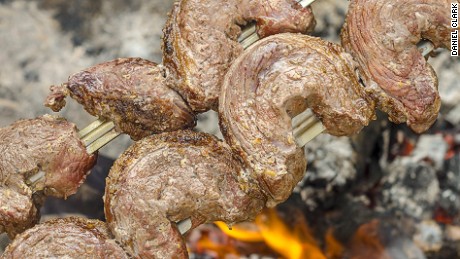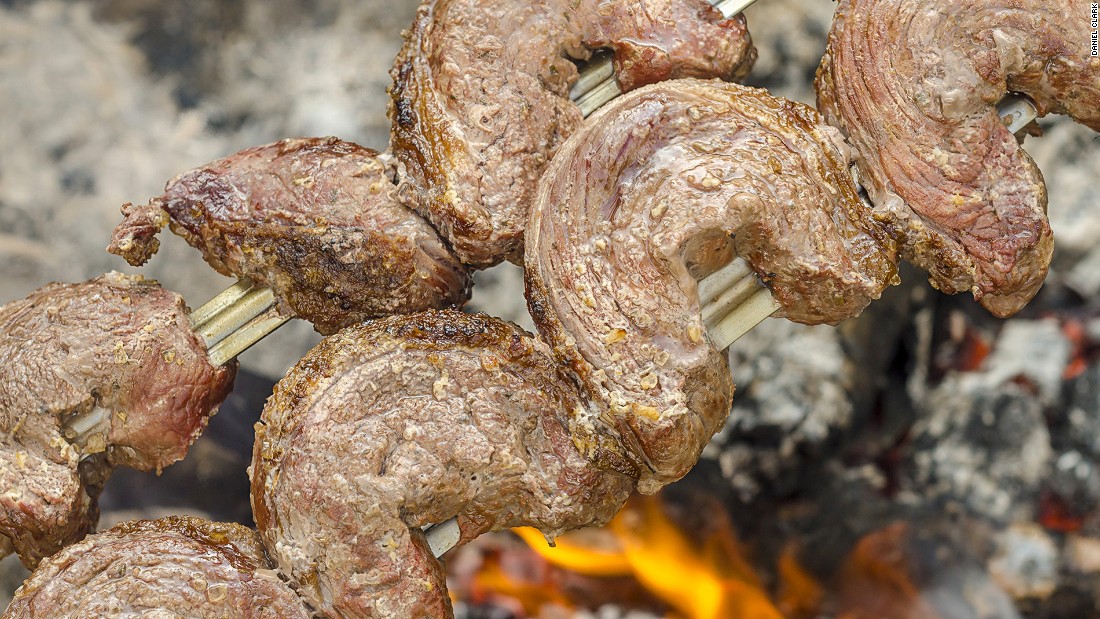
(CNN)Americans are perhaps the standard bearers of the "barbecue."
Come summer, US backyards and parks are full of people gathering around sauce-slathered chicken and other meats.
But famed as America"s grill skills may be, many would claim it can"t hold a glowing charcoal ember to the meat-charring culture of, say, Argentina or South Africa.
History isn"t clear on where the term "barbecue" comes from -- one explanation is that it comes from "barbacoa," a term used by Spanish explorers to describe the Caribbean"s indigenous Taino people"s cooking technique.
In any case, barbecue as we know it today covers multiple cooking methods: On grills, above fire pits, under the ground and in clay ovens.
There are regional variations and customs everywhere from South America to Africa to Asia.
Read on for further proof that the lip-smacking barbecue experience is a universal tradition, not just an American one.
Braai (South Africa)
The South African braai ("barbecue" in Afrikaans) is the nation"s top culinary custom.
Here, the frequent gathering of friends and family over grilled, juicy cuts of steak, sausage and chicken sosaties (skewers) cuts through all racial and socioeconomic lines.
And no place does "Sunday Funday" quite like the townships, where shisa nyama ("burn meat" in Zulu) venues elevate the braai experience with on-site butchers, cooks, drinks and party-starting DJs.
Chicago native and model Unique Love spent three years living in Cape Town and fondly recalls her first shisa nyama.
"Having a braai in Cape Town"s Mzoli"s Meat felt like home," she says. "After eating, I never wanted to [leave] because the community"s ambience felt comforting."
Mzoli"s Meat, M18/M36 Gugulethu, Cape Town Central 8001; +27 722 556 239
Asado (Argentina)
Umu, Samoa"s version of the barbecue, is similar to the underground cooking customs of Fijian lovo.
Avichai Ben Tzur, a travel writer/entrepreneur who"s spent significant time in the South Pacific, describes barbecue prep work as a family task.
"Young men of the extended Samoan family gather together to prepare the "umu," hours before the traditional Sunday feast commences... catching fresh fish or slaughtering a pig, collecting taro leaves and breadfruit from the family"s agricultural plot and cracking open coconuts for the palusami."
The palusami, a Samoan staple made of coconut cream (often seasoned with onions, lemon juice and simple spices) wrapped in taro leaves, is "a delicious calorie bomb that cannot be resisted by Samoans," says Tzur.
Gogigui (Korea)
Gogigui (Korean for "meat roast") is a favorite of both Koreans and international eaters.
Dining at a Korean BBQ usually consists of sliced beef, pork and chicken with an assortment of banchan (side dishes) and rice cooked in the center of a table, which is either cooked by the chefs or the diners themselves.
Should you choose to cook your own gogigui, "Masterchef Korea" finalist Diane Sooyeon Kang shares some tips.
"For thin slices of meat like chadolbaegi (thinly sliced beef brisket), you should lie it flat and cook it quickly for a few seconds on each side," she says.
"For meats like yangnyeom galbi (marinated short ribs), high heat and fire will be best as it will caramelize the outside while keeping the meat juicy inside."
Jessica Mehta, who"s lived in Korea for a year, suggests: "You"re not really having Korean BBQ if you don"t pair it with soju, a clear liquor somewhat similar to sake."
Seoseo Meokneun Galbi Jip,109-69 Nogosan-dong, Mapo-gu, Seoul; +82 02 716 2520
Pachamanca (Peru)
Though Peruvian cuisine is known the world over for ceviche and Pisco sour cocktails, one of Peru"s most traditional Incan cooking customs, pachamanca, is still under the radar to many.
Pachamanca (meaning "earth pot" in the Quechua language) involves digging to create a ground oven and lining the cavity with fire-heated stones to cook the food.
A variety of potatoes, corn, legumes and marinated meats are enclosed in banana leaves and placed into the earth oven for hours.
Authentic pachamanca are served sitting on the ground, and mostly take place on special occasions (especially religious ceremonies) and during harvest time every February and March.
Machu Picchu Pueblo, Next to the BCP Bank, by the railroad tracks, Aguas Calientes, Peru; +51 984 382 567
Read more: http://www.cnn.com/2016/08/29/foodanddrink/worlds-best-barbecues-bbq/index.html






No comments:
Post a Comment